One of the most secure ways to fix a pallet or join parcels together is with strapping. It’s a topic we’ve recently covered, detailing what is strapping and how to choose the right strapping. In this post we’re focusing purely on strapping machines, which can help speed up and simplify the strapping process. We’ll be detailing what they are, the different types available and how to use them, with a final focus on polypropylene strapping.
What is a Strapping Machine?
There are 3 main uses of strapping; pallet strapping, to join one parcel to another, and to offer more strength. It can be used to secure almost anything, from fragile products to bulky loads. A strapping machine is electrically powered and uses strapping to consistently create a secure seal on parcels and packages that is guaranteed to hold.
These machines do all the hard work, saving time, energy and materials in a typical packaging process. They do this without the need of manual strapping tools such as tensioners, cutters, or combination tools. The tension and strap strength can all be set by the operator, giving total control over the entire process of strapping. If you’re regularly strapping parcels and shipments, then consider one to speed up your operation and improve efficiency.
There are three types of strap machines; an automatic strapping machine, semi-automatic strapping machine, and handheld strapping tools – all with different benefits and applications depending on your requirements
1 – A semi-automatic, handheld and automatic strapping machine.
Automatic strapping machines are high performance, work best on high volume lines and are a bigger investment. Completely automated, they’re able to dispense up to 65 straps per minute making them ideal for production lines. In one smooth motion they strap a parcel, sealing and cutting the strap to size as per the tension level set by the operator. Watch the automatic strapping machine in action!
Semi-automatic strapping machines are lower cost and are more suited to lower volume operations, though still able to seal up to 24 straps per minute. They tension, seal and cut the strapping in one motion, though with these machines the strapping has to be fed in manually so some operator work is required.
Handheld strapping machines are the smallest and most portable. These battery powered machines are lightweight and easy to handle. They’re ideal if you don’t have the space for a large machine or need to strap items in different locations. These small machines tension, seal and cut quickly and efficiently and can be pre-programmed to set the tension strength.
How does a Strapping Machine work?
Depending on what type of strapping machine you’re using, it will work in one of three different ways. Below we’ve outlined each type of machine and detailed how they work so you can be fully informed before committing to a new packaging machine for your business.
Automatic strapping machines
These fully automatic machines are the quickest and simplest to use once they have been prepared and setup. With the tension set, simply place a parcel on the machine and begin the strapping process with the touch of a button. The items are fully strapped automatically, with the strap tensioned and cut by the machine. The parcel can then simply be removed, ready for the next shipment.
Semi-automatic strapping machines
These machines require a little more operator involvement than automatic machines, as the user feeds in the strapping manually around each parcel they wish to strap. This is a simple operation but takes slightly longer than using an automatic machine. Once the parcel has been placed onto the machine in the correct orientation, the user simply has to feed the strapping through, engage the machine, and the strapping is tightened to the set tension automatically and cut in one smooth simple action.
Handheld strapping
These small, portable devices work quite differently to the larger machines above. A small handheld device, they are simple to operate, lightweight and easy to handle. The strapping has to be wrapped around the item and placed in the machine where it then automatically tightens, tensions and seals the strap in one smooth action. Being handheld, they can be used vertically or horizontally and the tension strength can be set on the machine.
They’re powered by a rechargeable Li-Ion battery that typically take 30 – 40 minutes to fully charge and is capable of applying up to 440 strapping cycles per charge, depending on which device you use – plenty to get through a good amount of parcels in between charges.
How to use a Strapping Machine
Depending on which type of strapping machine you’re using, the operation will vary slightly. Below we’ve outlined the basic steps in how to operate the different types of machine.
Automatic & semi-automatic strapping machines
These two types of machines work in a similar manner, being an upright machine with a flat surface to work from. For both, the strapping is typically fed from the bottom or the side of the machine, where the strapping reel is placed and feeds into the machine.
To operate, one must place the parcel in the specified spot on the machine, so that the position of the strap is in the correct place to wrap around the item. For semi-automatic machines, you’ll then need to feed the strap over the top of the item and into the other side where it is fed back into the machine (automatic machines do this part without the need of manual intervention.)
Engaging the machine with the on button will then tighten and tension the strap, cut and seal it securely around the parcel. It can then quickly and easily be removed and the next one placed on. This simple and seamless process makes it ideal for quickly strapping parcels.
Handheld strapping machines
Otherwise known as handheld strapping tools, are convenient as they are portable, these small machines require a little more manual work to operate but the flexibility they offer for strapping is second to none. To operate, manually loop the plastic strapping, either PET strapping (also known as poly strapping) or polypropylene strapping all the way around the pallet, parcel or cartons. Once looped, feed both ends of the strapping into the handheld machine. With a pull of the trigger, it will then tighten and tension the strap, cut and fully seal it, giving a secure fit all around the item.
How to use Polypropylene Strapping
Polypropylene strapping (also known as PP) is one of the lightest and most versatile materials, making it ideal for sealing, reinforcing and securing lighter loads.
When using PP strapping with a machine, polypropylene machine strapping must be used – this is specifically designed for use in machines with regular embossing and straight parallel edges. This strapping is easier to work with and handle than heavier duty materials such as steel or polyester strapping, but gloves should still be worn when handling and loading this strapping onto a machine for use.
A popular question asked is how to use a polypropylene strapping machine, however there is no specific strapping machine for PP strapping, you can use an automatic, semi-automatic strapping machine or handheld strapping tools.
If you are strapping a pallet or strapping boxes, then make sure you use the right material for the job. Take a look at our guide to choosing the right strapping to help you decide.
If you’d like more information about strapping machines, systems or advice on which may be best suited for your packaging operation, simply get in touch with our team of packaging machine experts who are on hand to help. Simply visit www.rajapack.co.uk or contact our team on 0800 142 26 46, or machines@rajapack.co.uk.







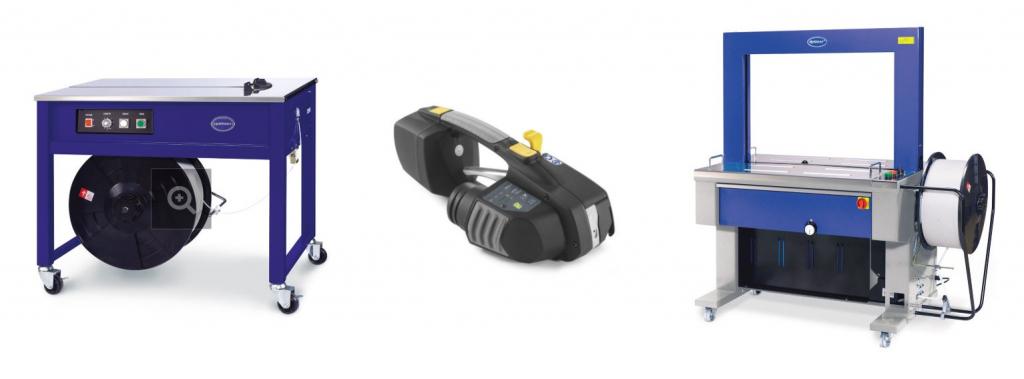







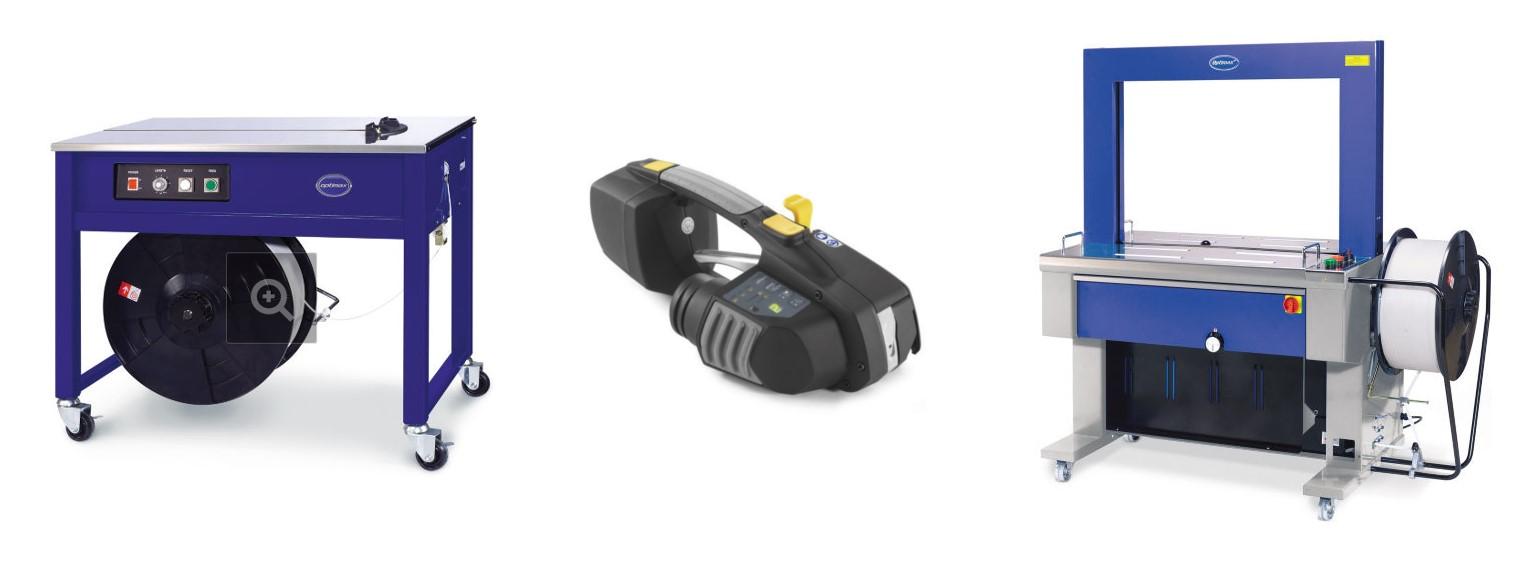
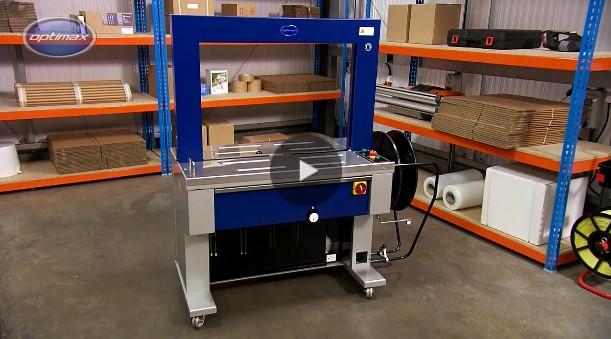
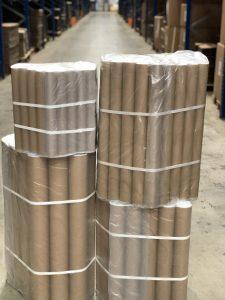
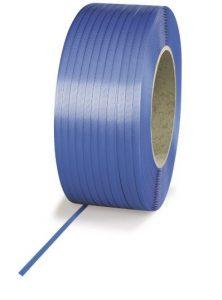

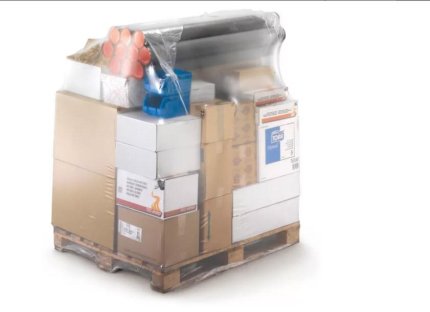

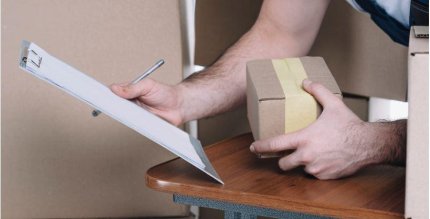

I appreciate that this article talks about how a strapping machine works, as well as the different types of strapping machines. I think it’s good to know the differences between different available options before fully investing in one. I’ll reference this article again if I ever need to buy a strapping machine.
Great Article!! This articles explains how a strapping machine works very well.